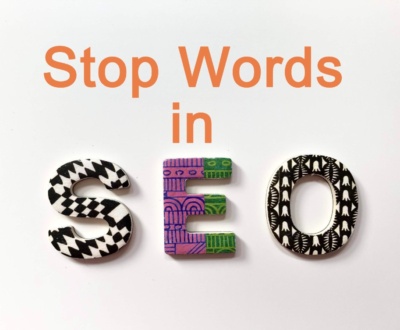Strategic Use of Images in SEO-Search Engine Optimization
- February 15, 2024
- Digital Marketing, On-Page SEO

Images are not only a superpower for boosting your website’s search engine visibility and captivating your audience, but also a key differentiator in a visually focused online world. That’s why strategic use of images in SEO – Search Engine Optimization is essential for any website owner who wants to stand out from the crowd and attract more visitors. By following some simple image SEO best practices, such as choosing the right format, using descriptive filenames and alt text, and optimizing for speed and responsiveness, you can enhance your images and make them work for your SEO goals.
Table of Contents
Understanding Image Interpretation by Search Engines
- Contextual Clues: Search engines don’t just “see” your image – they analyze everything around it. Place images strategically within relevant text blocks, naturally incorporating targeted keywords where appropriate.
- The Power of Captions: Well-written captions reinforce understanding for both search engines and users. Aim for descriptive, informative captions that include keywords without feeling forced.
- Social Share Optimization: Beyond your website, compelling images are critical for shareability. Open Graph and Twitter Card tags offer control over how your content previews on social platforms, leading to higher engagement and increased click-throughs.
The Visual Shift: Adapting to Changing User Preferences
- The Eye Demands Content: Users scan, scroll, and engage differently now – studies show a strong preference for visual content over walls of text. Strategic images help tell your story more effectively.
- Infographics: Knowledge Made Beautiful: Infographics combine data with impactful design. This highly shareable medium showcases your expertise while potentially attracting numerous backlinks, a powerful signal to search engines.
- The Authenticity Advantage: In an era of stock photos, custom photography demonstrates effort and care. High-quality originals show a commitment to providing value and a unique experience for your visitors.
- Visual Branding: A consistent image style builds recognition. Consider colors, filters, and editing techniques that complement your overall brand identity for a cohesive experience.
How Images Directly Benefit Your SEO
- Engagement is Key: Pages with relevant visuals simply keep people on your site longer. Dwell time and reduced bounce rates are significant positive signals to search engines.
- Image Search: An Extra Traffic Source: Optimized images aren’t just for your website. Proper naming, alt text, and tags ensure top placement in Google Image Search, significantly expanding your potential audience.
- Staying Competitive: Search algorithms constantly evolve to match user preferences. Image optimization isn’t an option; it’s a necessity to thrive in an increasingly visual search landscape.
Image Optimization Masterclass: Best Practices
- The Resolution Question: High-quality matters, but don’t sacrifice load speed. Utilize compression tools or formats like WebP to balance beautiful visuals with website performance.
- Naming Conventions that Work: Think of image filenames as mini SEO opportunities. Replace generic names (e.g., “IMG1234.jpg”) with descriptive, keyword-infused versions (“red-apple-orchard-autumn.jpg”)
- Alt Text: Accessibility & SEO Boost: Alt text provides context for screen readers and search engines. Aim for accuracy and clarity without excessive keyword stuffing.
Technical Considerations for Peak Performance
- The Sitemap Advantage: Including images in your XML sitemap makes it easier for search engines to find and index, prioritizing them within relevant searches.
- Responsive Reigns Supreme: A seamless experience across all devices is non-negotiable. Responsive design principles ensure your images never break the layout or hinder mobile usability.
Additional Considerations
- Copyright: The Golden Rule: Original is best, but when sourcing images, always secure proper rights and permissions. This protects you and promotes a positive online presence.
- Mobile Matters More: A mobile-first optimization approach means never letting images compromise the experience on smaller screens.
- Analytics are Your Guide: Don’t guess – track your image metrics. Platforms like Google Analytics show if images draw people in or contribute to high bounce rates, allowing refinement of your strategy.
The Future is Bright (and Visual!)
- Case Studies: Learn from the Best: Seek out websites known for excellent image SEO and analyze their success. What techniques and image types work particularly well in your industry?
- Emerging Tech: Stay informed about image recognition and voice search. Optimizing today prepares you for how users will discover content tomorrow.
Your Image Optimization Toolkit
- Compression Saviors: Explore free and paid services (TinyPNG, Compressor.io, CMS plugins) to reduce image file size without quality loss.
- Stock Photos Strategically: When custom imagery isn’t possible, source carefully from reputable libraries (Unsplash, Pexels, Pixabay), prioritizing unique and relevant visuals.
- Editing Power: Invest time in learning basic image editing. Even free tools like Canva or GIMP offer resizing, cropping, and simple enhancement options. For complex edits, Adobe Photoshop is the industry standard.
Hello! I’m the Admin, a digital marketing consultant and social media strategist based in Kolkata, India. My expertise lies in providing top-notch SEO services, crafting effective social media marketing campaigns, and optimizing Google Ads for businesses.
About us and this blog
We are a digital marketing company with a focus on helping our customers achieve great results across several key areas.
We offer professional SEO services that help websites increase their organic search score drastically in order to compete for the highest rankings even when it comes to highly competitive keywords.
Subscribe to our newsletter!
Subscribe to get such interesting stuffs to your inbox!
More from our blog
See all postsRecent Posts
- Create Social Media Video Ads That Drive Conversions September 20, 2024
- Google Penalty Recovery Strategies for Restoring Your Rankings April 5, 2024
- Why Your Business Needs a Well-Designed Website March 13, 2024








